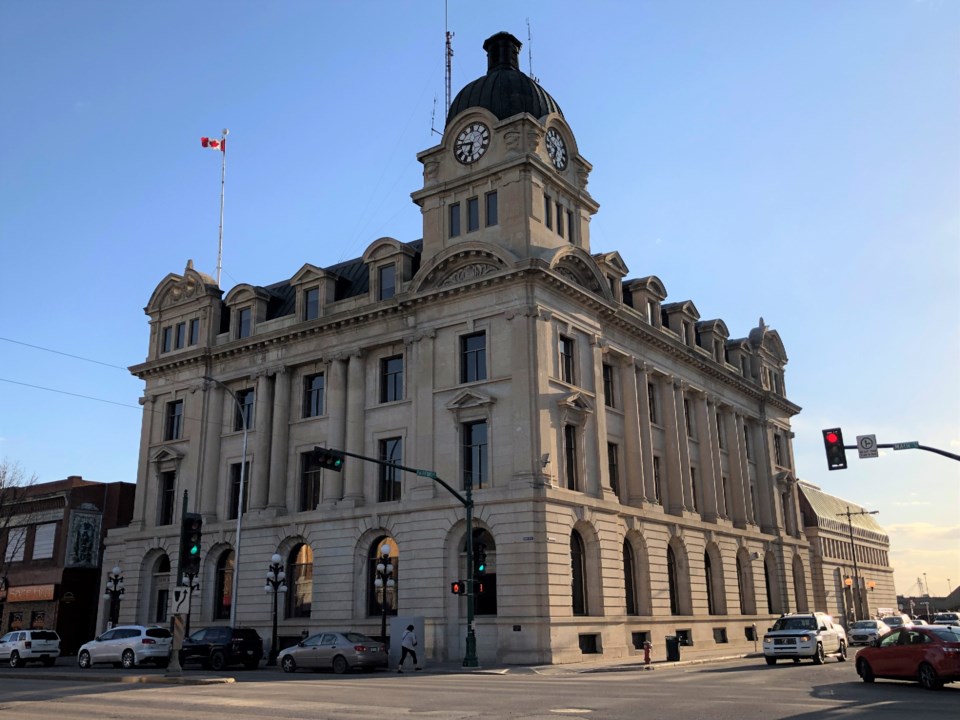The discussion about reducing the speed limit on Main Street North is over for now after city hall released statistics about downtown speeds as part of a review into possibly installing traffic-calming safety measures.
Instead, council authorized city administration to consider installing traffic-calming measures and provide a possible cost. It also authorized city hall to refer the matter to police for further information.
In January 2022, city administration presented a report about traffic calming alternatives on Main Street North. The report was presented as a receive and file motion. However, council wanted extra statistical data about traffic speeds downtown.
Data collection
The municipality collected traffic data at two locations this past summer: north of Oxford Street from June 23 to 30 and north of River Street from July 19 to July 28.
Oxford Street
There were 52,861 total vehicles that passed through the zone — north of Oxford Street going northbound — during the collection period. The data showed that 85 per cent of motorists — 44,932 vehicles — drove 55 kilometres per hour, with the average speed being 49.16 km/h.
The maximum speed recorded was 137 km/h.
Meanwhile, there were 54,225 total vehicles recorded driving southbound through the zone. The data showed that 85 per cent of motorists — 46,091 vehicles — drove 56 km/h, with the average speed being 50.76 km/h.
The maximum speed recorded was 113 km/h.
River Street
There were 29,205 total vehicles that passed through the zone — north of River Street going northbound — during the data collection period. The data showed that 85 per cent of motorists — 24,824 vehicles — drove 44 km/h, with the average speed being 36.81 km/h.
The maximum speed recorded was 96 km/h.
Meanwhile, there were 23,123 total vehicles recorded driving southbound through the zone. The data showed that 85 per cent of motorists — 19,655 vehicles — drove 41 km/h, with the average speed being 32.71 km/h.
The maximum speed recorded was 88 km/h.
City administration presented the data during the Oct. 11 regular council meeting. Council voted to receive and file the report.
City’s perspective
City hall has installed traffic calming measures over the years that have worked, such as bulb-type corners that force people to stop before turning and flowerpots on medians that encourage drivers to approach those intersections slowly, Mayor Clive Tolley said after the meeting.
While the statistics show most people slow down on Main Street from Manitoba Street to Oxford Street, Tolley has noticed — mostly while using The Mad Greek’s outdoor café — that motorists “gun their vehicle” up the hill northbound. Yet, he believes council made the right decision to keep the speed limits intact and continue with the current calming measures.
“That is what we wanted, so people will be more careful and look around and stop and shop,” he said. “And of course, beware of pedestrians and tourists that are downtown and enjoying our city.”
The police will have to handle people breaking the speed limit as they drive north on Main Street past Oxford Street, the mayor continued. That issue gives the cops the chance to install a speed camera, issue tickets, and encourage motorists to slow down.
Tolley added that while the current traffic calming measures have worked well, reviewing them periodically is always good to determine if they’re still working.
City manager Jim Puffalt acknowledged that the discussion around this issue is over “for now” with the statistics’ release. The goal was to acquire hard data to make better decisions instead of relying on anecdotal facts — a goal now achieved.
“Honestly, I don’t think we had any data before that, so now we have a baseline,” he added. “I suspect we’ll want to take a look in a couple of years again to see if anything has changed.”
The next regular city council meeting is Monday, Oct. 24.




